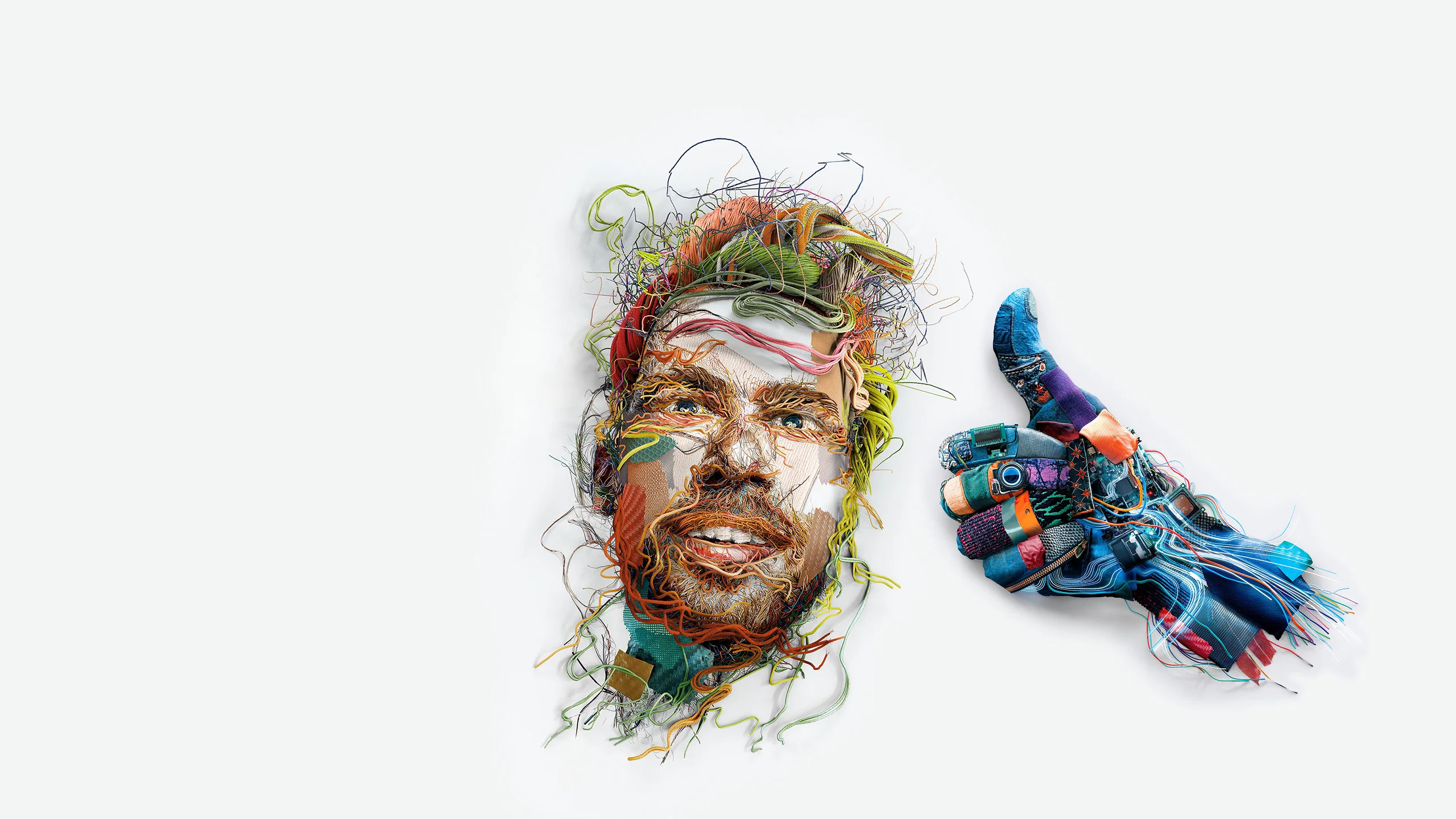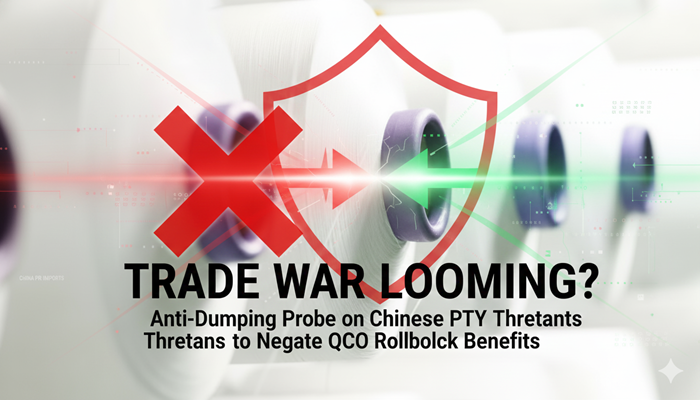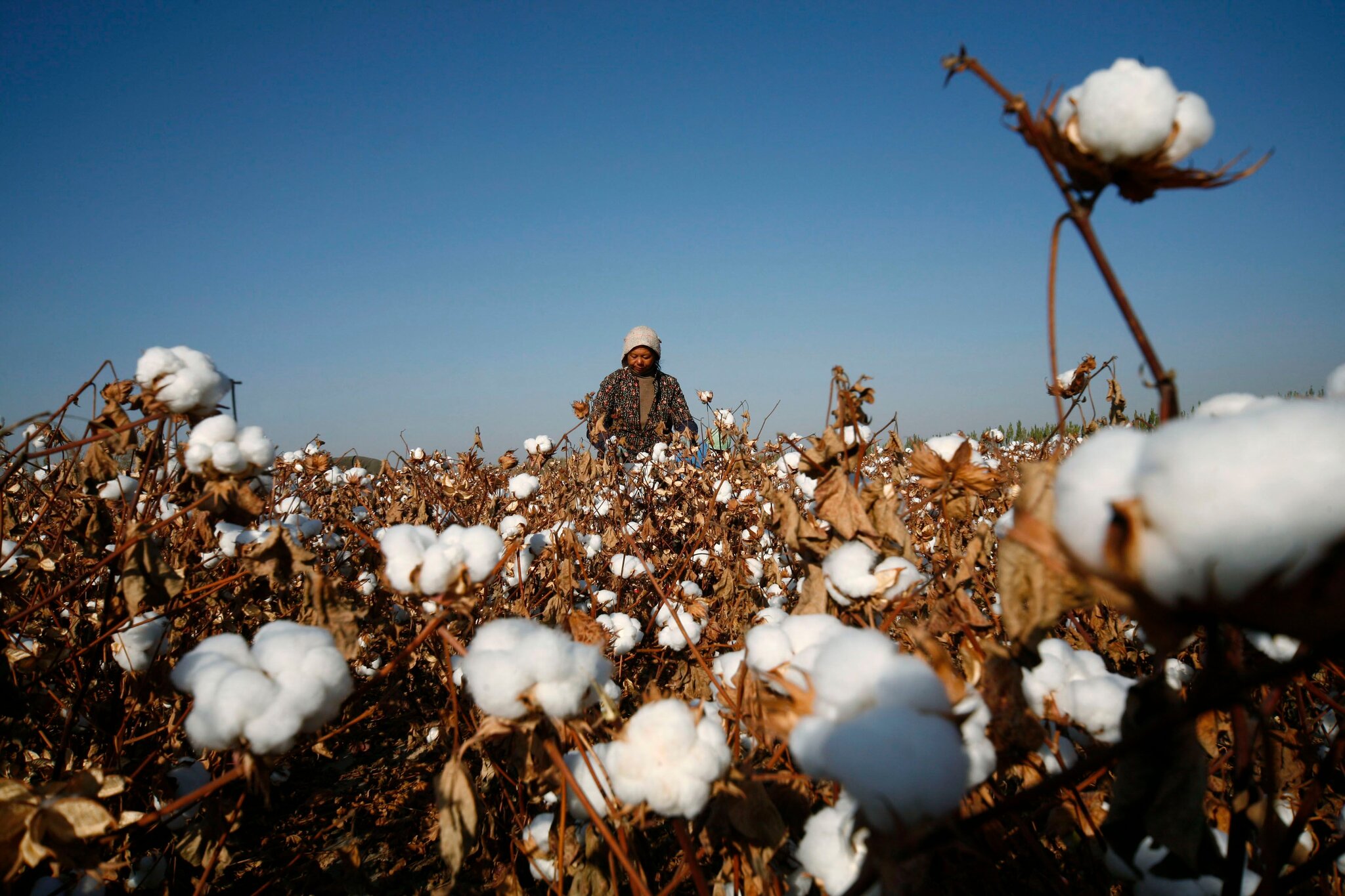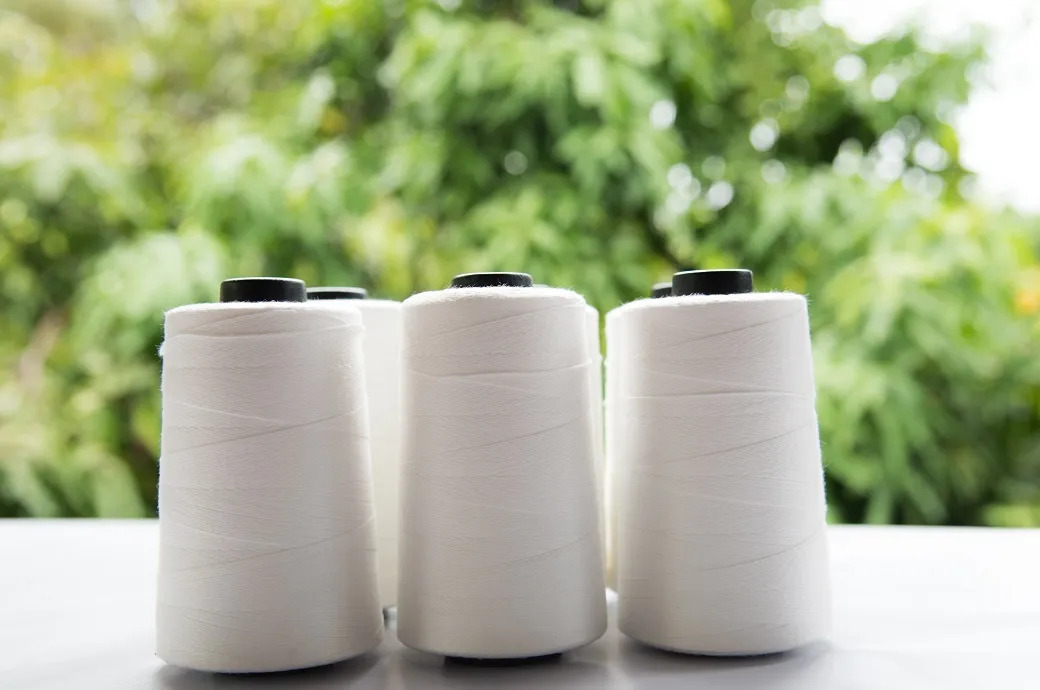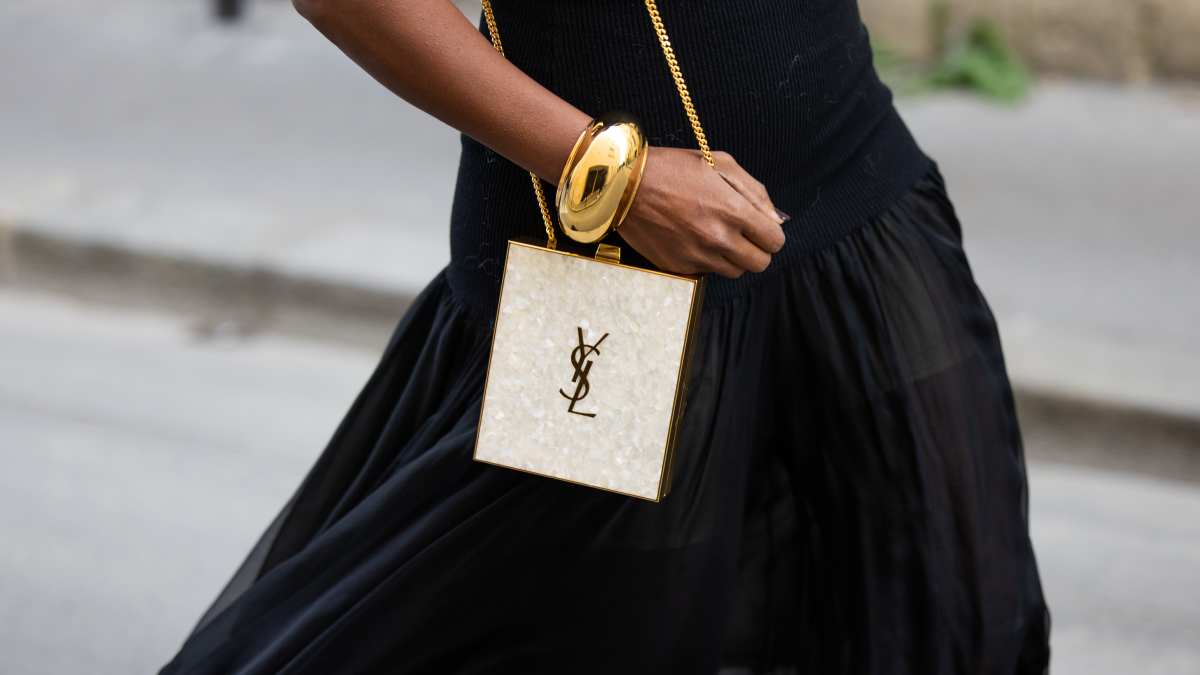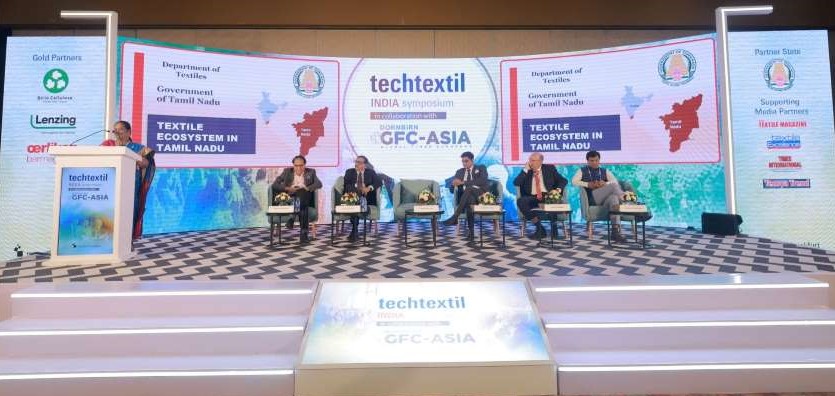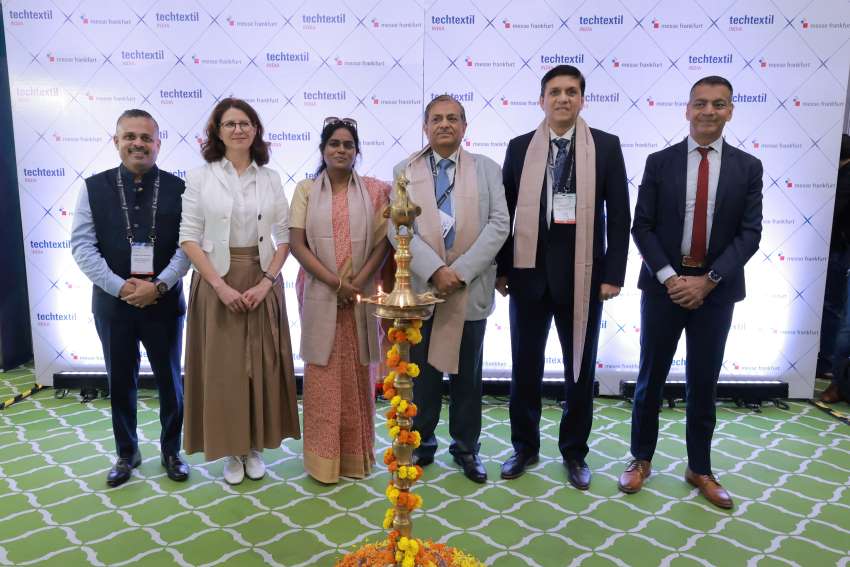FW
In a major policy reversal to support the textile industry's global competitiveness, the Ministry of Textiles has immediately rescinded the Quality Control Order (QCO) on Viscose Staple Fibres (VSF). The notification, published on November 18, 2025, reverses the 2022 order that mandated Bureau of Indian Standards (BIS) certification for VSF imports. This strategic move, following a similar rollback for the polyester value chain, directly addresses the industry’s concerns over high raw material costs and supply constraints.
Price war and supply chain relief
The QCO had acted as a non-tariff barrier, granting a 10-12% price premium to the sole domestic VSF producer and causing imports to plummet by 65% since April 2023. The market re-opening will facilitate an immediate inflow of cheaper VSF from global suppliers like China and Indonesia, forcing a convergence of domestic prices with international rates. As VSF—the second-largest Man-Made Fibre (MMF)—becomes cheaper, it increases the competitive pressure on Polyester Staple Fibre (PSF) and makes Poly-Viscose (P-V) blends more cost-effective for garment manufacturers. The overall reduction in MMF costs is expected to significantly improve the global cost competitiveness of Indian textiles, aligning with the Vision 2030 goal of achieving $100 billion in textile exports.
Industry leaders have hailed the decision as a "path-breaking reform," critical for ensuring seamless access to raw materials and driving growth toward the government's target of a $350 billion textile business.
The Rajasthan State Industrial Development and Investment Corporation (RIICO) has granted an administrative approval of approximately $25.0 million (₹221.03 crore) for the development of the Roopaheli Textile Park in Bhilwara. This significant investment is being hailed as a critical step to transition the 'Textile City' from merely a production hub to a state-of-the-art integrated manufacturing and export center, specifically focusing on its dominant synthetic and technical textile segments.
Phasing out bottlenecks with a new Mega-Park
The sanctioned funds are earmarked for developing the new park over 12.48 lakh sq. meters in Hurda Tehsil, providing 181 industrial plots. The plan includes essential infrastructure like fire stations, skill development centers, and common facilities to consolidate spinning, weaving, processing, and garment production. Bhilwara, historically known as a major producer of PV (Polyester-Viscose) fabrics, currently operates around 1,000 textile units with an estimated annual turnover of approximately $2.82 billion (₹25,000 crore), exporting synthetic yarn and fabrics globally. The new park aims to address long-standing challenges such as high electricity costs and the need for modern infrastructure, which the industry has consistently raised in pre-budget demands.
Resilience and the Technical Textile future
Despite global slowdowns and post-pandemic challenges like supply chain disruptions, Bhilwara's textile sector has historically demonstrated resilience, with an annual growth rate averaging 8-10% before major economic shifts. The city accounts for 47% of Rajasthan’s net value added in textiles. A key growth driver is the expansion into technical textiles—fabric used for functional, non-apparel purposes like military tents and industrial applications—a segment where local players are actively diversifying.
Big companies such as Bhilwara Technical Textiles Limited (BTTL), which focuses on this specialized segment, highlight the market potential. While smaller firms face profitability pressures, their presence underlines the strategic shift toward high-value, niche products. This RIICO investment is seen as crucial for providing the supportive ecosystem required for this next phase of value-added manufacturing and realizing the industry's full export potential. This video provides an update on the $25.0 million sanction for the Roopaheli Textile Park in Bhilwara.
Day 1 of the Asia-Pacific Textile & Apparel Supply Chain Expo (APTEXPO 2025) in Singapore redefined the future of fashion sourcing, shifting the industry’s narrative from low-cost labor to sustainable compliance and technology integration. With major buyers like Nike, Lululemon, and VF Corporation driving attendance, the immediate challenge is re-engineering supply networks to be resilient and fully traceable.
Circularity demands reshaping partnerships
The pivotal issue remains environmental accountability. As the global secondhand apparel market is forecasted to grow five times faster than the primary sector, pressure is mounting on Asian manufacturers to embrace circularity. Sharon Lim, President of the Singapore Fashion Council, emphasized the urgent need for verifiable sustainability, stating, “Greenwashing is no longer an option.” Exhibitors like NicheTech Advanced Materials are showcasing bio-based and recycled performance textiles, transforming traditional supplier relationships into deep-rooted sustainability partnerships—a key challenge for Asia’s manufacturing base.
Performance & decentralized growth
The event highlighted the booming specialized apparel segment at the Sports & Outdoor Fashion Forum. Brands like Lululemon, known for its strong athleisure market position and double-digit annual revenue increase, are driving demand for functional, high-performance, and sustainable materials. This retail initiative supports the broader plan for decentralized manufacturing models, a strategy aimed at mitigating supply chain risks (cited as a challenge by 56% of fashion executives in a recent report) and boosting efficiency across the region.
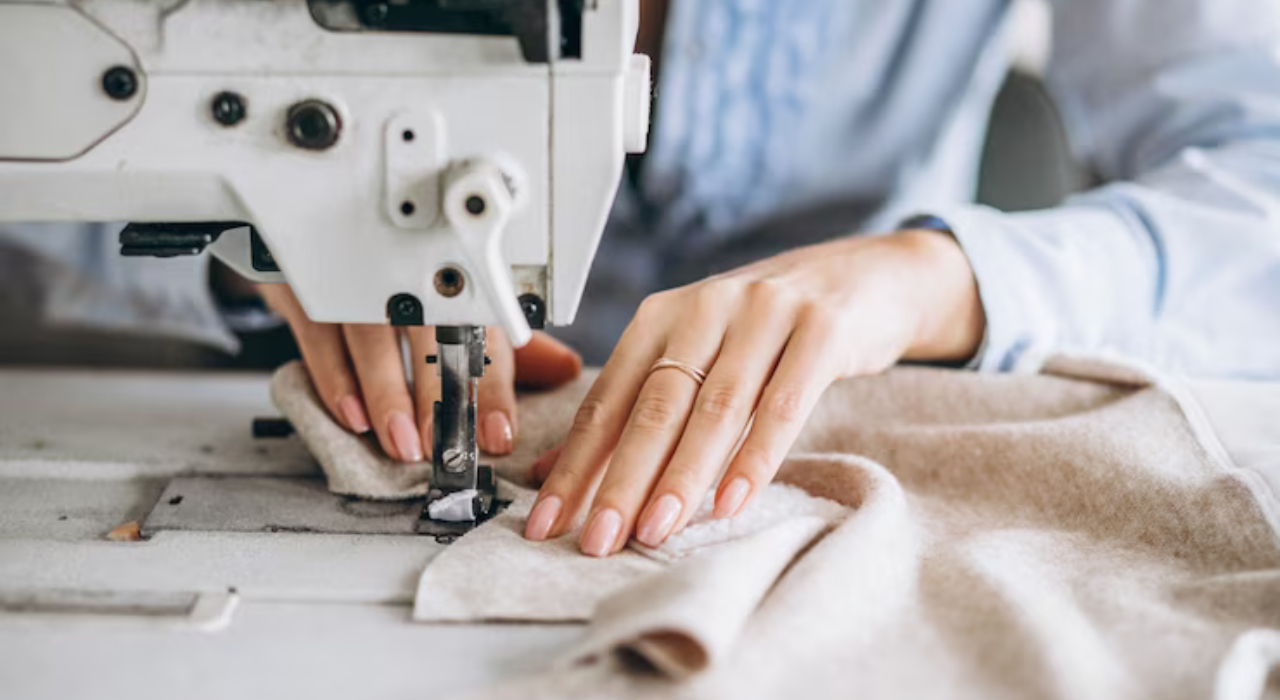
When the US announced a sweeping 50 per cent tariff on Indian textile and apparel imports, the shockwaves reverberated across India’s factory floors and policy circles alike. The move, ostensibly aimed at protecting American manufacturing threatened to upend a sector that employs over 45 million people and contributes nearly 10 per cent of India’s total exports.
In Tiruppur, the heart of India’s knitwear export hub where a third of shipments go to the US, panic spread swiftly. Containers sat idle at ports. Buyers renegotiated contracts or withdrew altogether. Within a fortnight, yarn orders plunged 30 per cent, and many exporters supplying brands like Gap, Tommy Hilfiger, and Ralph Lauren were asked to absorb a quarter of the tariff burden an impossible demand in an industry where margins rarely exceed 7-8 per cent.
“This isn’t just a slowdown, it’s a tectonic shift,” said Raja Shanmugam, former president of the Tiruppur Exporters’ Association. “We’ve faced currency volatility, inflation, and global recessions before. But a 50 per cent tariff changes the fundamental equation.”
The immediate fallout an existential threat
Exports to the US, valued at around $10.7 billion annually, are now expected to fall by up to 40 per cent, according to preliminary industry estimates. The Global Trade and Research Initiative (GTRI) reported that between May and August 2025, India’s overall exports to the US had already declined 22.2 per cent, even before the tariff took full effect.
In the apparel sector, some exporters reported losing 80 per cent of US business. Embroidery and finishing units, heavily dependent on export-linked orders, laid off as much as 40 per cent of their workforce. “We’re seeing daily wage workers returning to their villages,” said an exporter from Karur. “The US market is gone for now. We need new doors to open.”
India suddenly found itself at a severe disadvantage. Competing exporters Bangladesh, Vietnam, and China continued to enjoy lower tariff rates, making Indian goods twice to thrice as expensive.
The Reboot: Building a post-US strategy
Rather than waiting for Washington to reconsider, New Delhi and the industry charted an ambitious recovery plan one rooted in diversification, innovation, and structural reform. The Ministry of Textiles set a long-term goal: triple India’s textile exports to Rs 9 lakh crore by 2030. To get there, the roadmap rests on three strategic pillars:
1. Market diversification beyond the US
Europe and the UK: Negotiations for the India-UK Comprehensive Economic and Trade Agreement (CETA) are entering their final phase. Once ratified, it is expected to eliminate tariffs on nearly all textile categories, giving Indian exporters an edge. Analysts project a 30-40 per cent jump in textile exports to the UK post-agreement.
Meanwhile, the European Union, which accounts for 27 per cent of India’s textile exports, remains a key target. Exports to Germany, the EU’s largest economy, have already grown 11.73 per cent year-on-year during April-August 2025.
Russia: India is actively courting the Russian market, which imports $12 billion in textiles annually. Recent trade missions and exhibitions in Moscow are part of a broader diplomatic effort to expand India’s footprint in Eurasia.
China & Hong Kong: Despite being competitors, China and Hong Kong have emerged as surprising growth markets. Exports to China rose 19.65 per cent, while to Hong Kong increased 26.19 per cent between April and August 2025, proof that supply chain realignments are opening new corridors for Indian products.
Australia & South Africa: Exporters are also exploring these emerging markets, though industry leaders caution that meaningful trade relationships will take 2-3 years to mature. “The world is realigning its sourcing base. India must become the supplier of choice not just for one market, but for many,” says Ajay Sahai, Director General, FIEO.
2. Strengthening domestic manufacturing
Production-Linked Incentive (PLI) Scheme: The PLI for textiles, focused on man-made fibers (MMF) and technical textiles, offers financial incentives for scale and innovation. The government recently extended the deadline for applications, showing a renewed commitment to help exporters upgrade technology and reduce costs.
PM MITRA parks: The Rs 4,445 crore, Mega Integrated Textile Region and Apparel (PM MITRA) scheme aims to create seven world-class textile hubs integrating the entire value chain from fiber to finished garment under one ecosystem. Tamil Nadu, Gujarat, and Maharashtra have already begun implementation.
Fixing the inverted duty structure: One of the sector’s long-standing bottlenecks the inverted duty structure, is under review. Currently, some raw materials attract higher import duties than finished products a distortion that undermines competitiveness. Addressing this anomaly, particularly in the MMF and viscose segments, could unlock significant cost savings.
3. Leveraging India’s strengths
Kasturi Cotton initiative: India’s new ‘Kasturi Cotton’ brand, supported by traceability and quality certification, aims to position Indian cotton alongside the world’s best. With sustainability increasingly influencing buyer decisions, this initiative could open high-value global segments.
Workforce and skill development: Schemes like Samarth continue to upskill textile workers, ensuring a steady pipeline of trained manpower. Interestingly, Russian and African textile enterprises have expressed interest in hiring Indian technicians, underscoring India’s reputation for skill excellence.
Moving up the value chain: A shift toward high-value and sustainable products organic cotton, recycled fibers, and ethical sourcing is already visible. India’s share in the premium and luxury apparel export category is growing, as global brands seek alternative suppliers to China amid geopolitical tensions.
Table: Export values for textile and apparel commodities April to August 2025
|
Commodity |
Export value (Apr–Aug 2025) |
% change (Y-o-Y) |
|
Readymade Garments |
$6.765 billion |
+5.78% |
|
Cotton Textiles |
$4.865 billion |
-0.62% |
|
Man-made Textiles |
$1.995 billion |
+0.24% |
|
Total Textile & Apparel |
$15.113 billion |
+2.52% |
Source: DGCIS, Ministry of Textiles
Despite the headwinds, India’s overall textile exports grew 2.52 per cent in early FY26 thanks to diversification gains in non-US markets. “This crisis has been brutal, but it’s forcing us to innovate faster than ever,” explains Sanjay Jain, MD of TT Ltd. “We’re digitizing our supply chains, embracing sustainability, and targeting niche markets like athleisure and performance wear.”
Rewriting the global playbook
India’s textile story has always been one of resilience from surviving the quota regime to weathering COVID-19 disruptions. The current tariff shock, while severe, is proving to be a catalyst for long-overdue transformation. Analysts note that if the current reforms and diversification strategies succeed, India could emerge as the world’s second-largest textile exporter by 2030, behind only China. The US tariffs, once seen as a crippling blow, may ultimately redefine India’s global standing not as a cost-based supplier, but as a design-driven, innovation-led textile powerhouse. As one industry veteran put it: “They wanted to hurt us. Instead, they woke us up.”
China's textile and apparel (T&A) sector is showcasing a decisive shift, with overall exports down just 0.3% in the first three quarters of 2025. This near-flat aggregate hides a fundamental divergence: upstream textile (fabric, yarn) exports rose 2.1%, while the finished apparel exports declined 2.5%.
Engineering resilience against the sourcing shift
The growth in textile exports underscores China's strategy to move up the value chain. As garment manufacturing (the labor-intensive segment) is steadily offshored to countries like Vietnam and Bangladesh—part of the "China Plus One" diversification—Chinese factories are consolidating their global dominance in high-performance, capital-intensive fabric and yarn production.
This structural split is intentional. China remains the indispensable global supplier of sophisticated, value-added inputs, even to its competitors. For instance, while US apparel imports from China fell sharply 9% in Jan-Aug, exports of certain categories of technical textiles and advanced synthetic fibers continue to climb, showcasing market strength in engineering over mere assembly.
BRI market expansion and automation
Companies are relying on two key strategies to maintain long-term financial stability: market diversification and technological upgrade. Exports to key markets like the EU and Japan have shown resilience, increasing by 4.5% and1.1% respectively (Jan-Aug data). Moreover, the Belt and Road Initiative (BRI) markets are a critical focus, providing new avenues for high-volume sales of textile products. The heavy investment in digitalized and automated production lines ensures China retains its cost-of-production advantage for advanced materials, solidifying its role as the world's "fabric engineer".
The Confederation of Indian Textile Industry (CITI) analysis for October 2025 confirmed the deepening crisis stemming from the 50% reciprocal US tariff, with overall Apparel exports recording a sharp 12.88% year-on-year decline. The most critical data confirming the tariff impact is the month-on-month (MoM) collapse of shipments to the US, India’s largest market. Exports to the US plunged approximately 20% between August and September (the first full month of the levy), a drop that wiped out over $1.3 billion in shipment value.
Although US-bound shipments saw a minor MoM recovery in October to $6.3 billion, CITI Chairman Ashwin Chandran warned, "The sustained pressure demands aggressive market recalibration, especially as Textiles and Apparel are among the hardest hit sectors." The T&A share in total national exports dipped to 7.76% in October.
In response to the US uncertainty, the industry is accelerating its pivot towards non-traditional markets. Data for Q2 FY26 showed significant growth in emerging destinations, with exports to Japan rising 19% and the UAE climbing 14.5%. The government's recently approved Export Promotion Mission is intended to provide structural support, especially for MSMEs struggling with affordable finance.
Simultaneously, major integrated firms, like Alok Industries, are prioritizing compliance with looming EU sustainability regulations and investing in technical textiles, a segment forecasted to reach $45 billion by 2026. This focus on "green compliance" is emerging as the industry’s central long-term growth plan, replacing reliance on price competitiveness alone.
While China’s overall personal luxury market saw a contraction of 15-20% in 2024, the Guo Chao (National Tide) cultural movement is fueling a significant boom for local apparel brands that fuse Chinese heritage with contemporary design. This trend reflects a crucial shift where younger consumers prioritize cultural authenticity and value over foreign brand status.
Heritage brands turn performance stars
Domestic powerhouses in the apparel sector are reporting impressive growth, capitalizing on this new cultural confidence. Bosideng, China's largest down clothing company, reported record results for the FY2024/25, with revenue climbing 11.6% year-over-year to 25.90 billion RMB ($3.62 billion). Similarly, sportswear giant Li-Ning reported a 2.3% year-over-year revenue growth in the first half of 2024, significantly outpacing some global competitors.
The ‘Guo Chao’ advantage
These domestic success stories are driven by Neo-Chinese Style product innovation, which incorporates traditional motifs and artisanal techniques into modern silhouettes. For brands like Bosideng, this strategy has involved upgrading their product lines and digital engagement to resonate with Gen Z. This market pivot demonstrates that for luxury and premium apparel, the "Made in China" label now signifies unique design and cultural relevance, forcing global fashion brands to rethink their localization strategies.
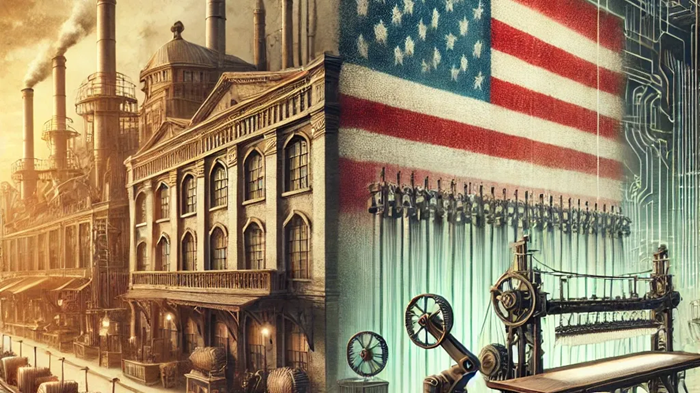
The Make America Great Again (MAGA) is initiative aimed at breathing new life into US manufacturing, but its impact on the textile and apparel sector has created a stark paradox. While the industry is innovating and shifting towards high-tech production, the very trade policies intended to protect it are simultaneously a source of significant pain and decline.
The shift from threads to tech
The US textile industry is no longer competing in the global race for low-cost apparel. Instead, it has undergone a quiet revolution, focusing on high-tech and industrial textiles. These specialized products, such as those used in medical equipment and protective clothing, are where the industry is finding its footing and generating value. Data shows a moderate rise in the value of US yarn and fabric manufacturing, reaching $24 billion in 2023.
This turn is crucial, as the industry recognizes it can't fight on a level playing field with foreign competitors on price alone. It’s a move to reclaim relevance by focusing on what the US does best: innovation and advanced manufacturing.
The tariff backlash
While the Made in America push was intended to shield domestic companies, many in the industry argue that the tariffs have backfired, creating a ‘lose-lose’ situation. As one textile company CEO lamented, the tariffs are "hurting small exporters" and have led to "stalled investments" and even discussions of moving operations abroad. This sentiment is echoed by major fashion companies, with one reporting an estimated "gross incremental cost of approximately $250 million to $300 million" from the tariffs.
This is not just anecdotal; it is a direct consequence of a trade policy that is seen as "a policy misstep that goes against the US national interests." The tariffs disrupt established global supply chains, increasing costs for American companies that rely on imports to produce their goods. The result is a cycle where, as a Bloomberg report highlighted, US textile exporters are now finding themselves punished by the very policies designed to help them.
The Human Cost: Productivity up, employment down
The promise of job creation under the MAGA initiative has also been a complex and often contradictory story. The data reveals a troubling trend: while the industry is becoming more productive, total employment continues its long-term decline.
Table:
|
Year |
Labor Productivity Index (textile mills) |
Labor Productivity Index (apparel mills) |
Total employment |
|
2019 |
89.7 |
105.8 |
33,190 |
|
2023 |
94.4 |
110.78 |
N/A |
|
2024 |
N/A |
N/A |
270,700 |
Note: Data for employment in 2023 is not readily available, but the trend shows a consistent decline. Labor productivity is measured as output per hour.
This paradox is driven by a focus on automation and efficiency. Fewer workers are producing more output, which is a success from a productivity standpoint, but a failure from a job-creation perspective. As one analyst noted, it is a sad reality that while the industry is making a comeback, it may be a comeback that leaves many workers behind. The story of Made in America in the textile sector is a battle between modernization and protectionism, with the industry's future
Digital darling Kim Kardashian's Skims brand aggressively challenges legacy apparel giants with global store push.Skims, has solidified its status as a major market disruptor, achieving a staggering $5 billion valuation after securing a $225 million funding round. This new capital isn't just a financial win; it signals an aggressive shift from its roots as a digital-first, direct-to-consumer (DTC) success to a global physical retail powerhouse.
Skims, co-founded with CEO Jens Grede, achieved an estimated $750 million in 2023 revenue by championing inclusive sizing (XXS to 5X) and diverse skin tones—a strategy that directly undercut legacy brands like Victoria’s Secret. The brand’s product line, spanning shapewear, loungewear, and activewear, is now pivoting to brick-and-mortar.
The Physical Gambit
While Skims currently operates around 20 physical locations, Grede has declared the brand will become a "predominantly physical business" globally. This move is crucial for intimate apparel, allowing customers the essential try-on convenience that digital channels lack.
Skims challenges the athleisure king
The expansion into physical retail, combined with recent high-profile moves like the NikeSkims collaboration, positions the brand as Lululemon’s most potent new competitor in the $440 billion activewear market. The brand's ability to generate massive FOMO with viral product drops (like a 250,000-person waitlist for a simple dress) demonstrates a marketing engine legacy players struggle to replicate.
Skims is forcing retail reckoning, the future belongs to brands that can seamlessly merge digital hype with accessible, inclusive physical shopping experiences. Its performance and valuation prove celebrity influence, when paired with genuine product innovation and a smart retail strategy, can rapidly eclipse established market leaders.
The recent opening of COS (Collection of Style) at Bellevue Square in Washington State is a highly visible signal of the London-based brand's escalated campaign to dominate the "affordable luxury" niche in the competitive US market. Spanning 2,454 square feet and designed in-house, the store, reportedly featuring elements like sculptural furnishings and Armourcoat clay lime plaster, is an integral part of COS's Elevation Strategy, blurring the line between high-street retail and art installation to attract a discerning clientele. This move directly addresses a consumer shift toward conscious, quality-driven style that values longevity over fleeting trends.
The H&M Group’s quiet luxury counterpart
Founded in 2007 by the Swedish H&M Group, COS was established as the sophisticated sibling to H&M, offering contemporary, minimalist clothing at a mid-range price point. This historical positioning is now amplified by the broader "quiet luxury" movement, where, according to a brand director, customers are "looking for investment pieces... at an accessible level," bypassing conspicuous logos for quality and craftsmanship. The brand's focus on "modern style, designed to last" is reinforced by its emphasis on premium materials, including fine merino wool and innovative recycled textiles, differentiating it from ultra-fast fashion rivals.
Aggressive multi-channel expansion as a growth plan
The Washington State store's debut, which features the new Autumn Winter 2025 collection, is a continuation of a multi-pronged growth plan. Following a significant US wholesale entry via partners like Nordstrom in 2022 and high-profile showings at New York Fashion Week (NYFW), the physical expansion is designed to build brand awareness beyond its core online base. This strategic visibility is essential for the brand, which has successfully captured the attention of the fashion industry, recently jumping significantly in the Lyst Index, demonstrating strong consumer demand.
COS as a critical revenue driver and market challenge
The brand is a vital growth engine for the H&M Group, with its primary online store, cos.com, generating a robust US$725 million in revenue in 2024, with the US consistently identified as its largest market. However, this growth requires tackling the challenges faced by mid-tier brands. COS navigates this by investing heavily in experiential retail and refining its supply chain to justify its higher price point.
As Design Director Karin Gustafsson stated, the team focuses on making pieces that will last a long time "in terms of quality and relevance," countering consumer fatigue with disposable fashion. The new Bellevue location itself is a case study in this approach, replacing a long-standing Eddie Bauer store, signifying the shift from traditional outdoor retail to aspirational, design-focused contemporary fashion in prime retail real estate.



